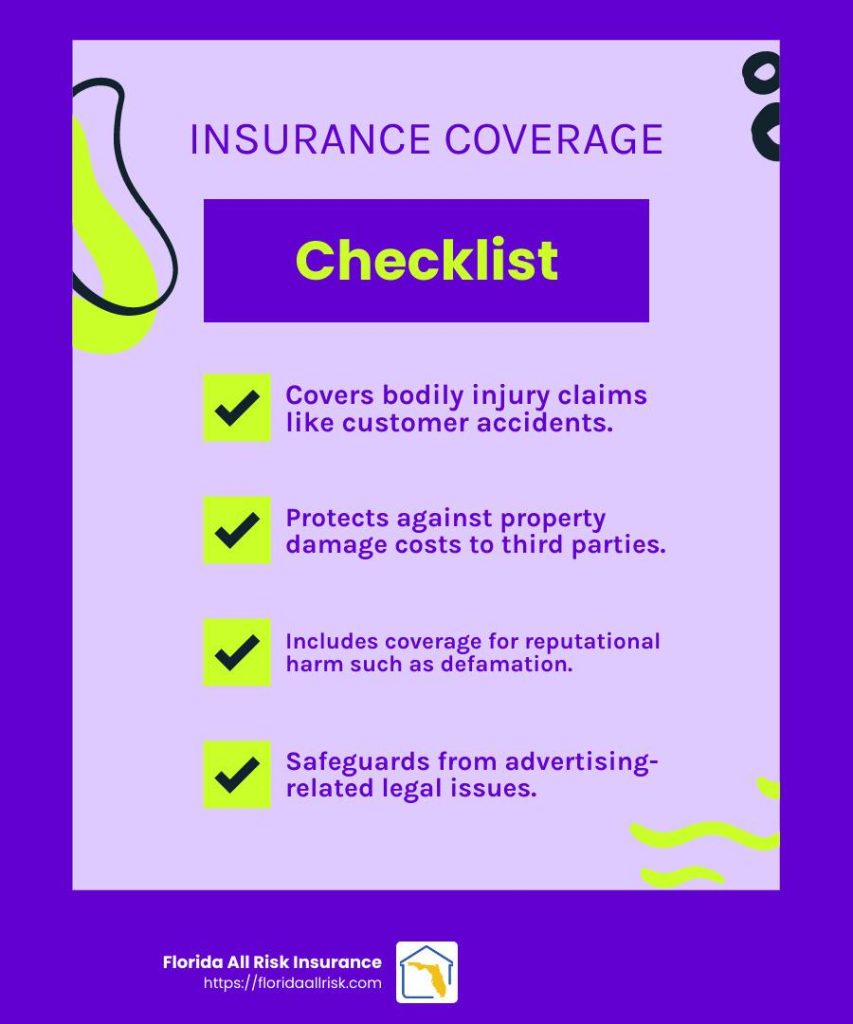When customers visit a business, their safety should always come first. Yet, accidents like slip-and-fall incidents can happen unexpectedly, leading to injuries that affect not only the visitor but also the business owner. Understanding customer injury and slip-and-fall coverage basics is essential for anyone who wants to protect both their guests and their livelihood. In this article, we’ll explore the crucial aspects of this type of insurance, shedding light on how it works, why it matters, and what steps you can take to ensure you’re prepared should an unfortunate accident occur. Whether you’re a small business owner or simply curious, gaining this knowledge can make a significant difference in navigating these sensitive situations with care and confidence.
Table of Contents
- Understanding the Common Causes of Customer Injuries in Slip-and-Fall Incidents
- Breaking Down Slip-and-Fall Coverage and What It Means for Business Owners
- Key Steps to Minimize Risks and Protect Your Customers Effectively
- Practical Tips for Handling Claims with Care and Compassion
- Insights and Conclusions
Understanding the Common Causes of Customer Injuries in Slip-and-Fall Incidents
Slip-and-fall incidents often arise from overlooked hazards that might seem minor but pose significant risks to customers. Wet or slippery floors, whether caused by recent cleaning, spilled liquids, or weather conditions, are among the leading contributors to these accidents. Uneven surfaces, loose carpeting, or poorly maintained staircases also significantly increase the likelihood of slips, trips, and falls. Inadequate lighting compounds the problem by making it harder to spot these dangers in time to avoid them.
- Spilled food or beverages left unattended
- Damaged or worn-out flooring materials
- Obstructed walkways and cluttered aisles
- Lack of proper warning signs around hazardous areas
Understanding these common causes is vital not just for prevention but also for managing liability and insurance coverage effectively. Property owners and business operators should prioritize regular inspections, quick cleanup protocols, and clear signage to reduce risks. Taking these proactive steps not only safeguards customers but also strengthens defenses against potential legal claims stemming from slip-and-fall injuries.
Breaking Down Slip-and-Fall Coverage and What It Means for Business Owners
Slip-and-fall coverage is a critical component of business liability insurance that helps protect owners from financial losses stemming from customer accidents on their premises. When a customer slips, trips, or falls due to hazards such as wet floors, uneven surfaces, or inadequate lighting, the business may be held legally responsible for any resulting injuries. This coverage not only covers medical expenses and legal fees but also guards a business’s reputation by demonstrating a proactive approach to safety and risk management.
Business owners should understand that slip-and-fall claims can arise in a variety of scenarios, including:
- Spills or debris left unattended in aisles or customer areas
- Damaged flooring, loose rugs, or unsecured mats
- Insufficient warning signs or lighting in hazardous zones
By investing in comprehensive slip-and-fall coverage, owners can focus on creating a safe environment while mitigating the unexpected costs associated with customer injuries. It’s more than just insurance—it’s a safeguard that supports both business continuity and customer trust.
Key Steps to Minimize Risks and Protect Your Customers Effectively
To create a safer environment and reduce the possibility of customer injuries, it’s essential to implement proactive measures. This starts with regular inspections of your premises to identify potential hazards such as wet floors, uneven surfaces, or inadequate lighting. Equipping your team with proper training on how to handle spills promptly and signal temporary dangers with clear signage can significantly reduce slip-and-fall incidents. Additionally, investing in quality floor mats and non-slip coatings in high-traffic areas reinforces your commitment to customer safety.
Beyond physical interventions, maintaining comprehensive and transparent communication with customers is equally important. Making your safety policies visible and encouraging customers to report unsafe conditions fosters a collaborative approach to minimizing risks. Effective documentation and quick response protocols not only protect your customers but also strengthen your legal standing in case of an incident. Remember, the goal is to create an atmosphere where safety is ingrained in every aspect of your service, ensuring customers feel cared for and protected.
Practical Tips for Handling Claims with Care and Compassion
When managing claims, it’s essential to approach each situation with genuine empathy and a clear focus on the customer’s well-being. Listening actively without interrupting not only helps clarify the facts but also communicates respect and concern. Establishing trust early on by acknowledging the claimant’s experience can de-escalate tension and foster a cooperative atmosphere. Remember, details often come forward when the claimant feels heard and understood, allowing for a more accurate and fair resolution.
Efficiency and transparency are equally critical during the claims process. Providing clear, step-by-step explanations equips customers with the knowledge they need to navigate their claim confidently. Consider incorporating these practices:
- Regularly updating claimants on progress and any required documentation
- Offering flexible communication options to accommodate preferences
- Ensuring a warm, patient tone in all correspondence and conversations
- Training staff in trauma-informed communication techniques
By blending compassionate service with thorough professionalism, you create an environment where customers feel supported—not just processed. This balance ultimately helps protect your brand reputation and promotes smoother claims handling for all parties involved.
Insights and Conclusions
Navigating the complexities of customer injury and slip-and-fall coverage can feel overwhelming, but understanding the basics is a crucial step toward protecting your business and showing care for those who visit your space. Remember, behind every insurance policy are real people—customers who trust you to provide a safe environment. By staying informed and proactive, you not only safeguard your livelihood but also foster a community rooted in trust and responsibility. If you ever find yourself unsure, don’t hesitate to reach out to a professional who can guide you through the specifics tailored to your unique situation. After all, a little knowledge goes a long way in creating safer spaces for everyone.






